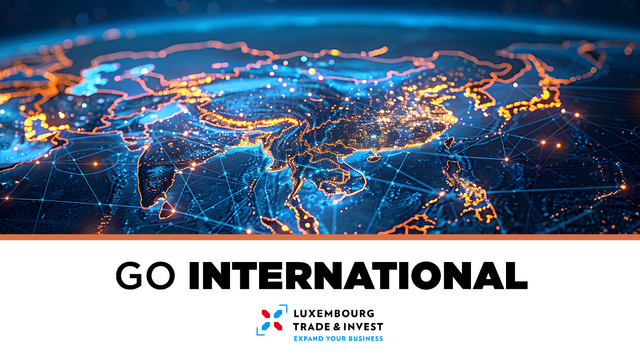
Chapitres
Several eastern Baltic tribes merged in medieval times to form the ethnic core of the Latvian people (ca. 8th-12th centuries A.D.). The region subsequently came under the control of Germans, Poles, Swedes, and finally, Russians. A Latvian republic emerged following World War I, but it was annexed by the USSR in 1940 - an action never recognized by the US and many other countries. Latvia reestablished its independence in 1991 following the breakup of the Soviet Union. Although the last Russian troops left in 1994, the status of the Russian minority (some 26% of the population) remains of concern to Moscow. Latvia acceded to both NATO and the EU in the spring of 2004; it joined the euro zone in 2014 and the OECD in 2016. A dual citizenship law was adopted in 2013, easing naturalization for non-citizen children.
Source: The CIA World Factbook - Latvia
Indicateurs clés
- Surface
- 64,589 km2
- Population
- 1,862,687 (July 2021 est.)
- Type de gouvernement
- parliamentary democracy
- Langues
- Latvian (official) 56.3%, Russian 33.8%, other 0.6% (includes Polish, Ukrainian, and Belarusian), unspecified 9.4%
- PIB
- $33.505 billion (2020 est.)
- Taux de croissance
- -3.6% (2020 est.)
- HDI
- 37
- Capitale
- Riga
Indicateurs macroéconomiques
Following an exceptionally strong 2017, economic growth will moderate somewhat in 2018, to around 4%, as investment decelerates due to the slower pace of disbursements of EU funds. Emigration and low domestic labour mobility lead to skills shortages and mismatches, contributing to strong wage growth and rising inflationary pressures. Strong domestic demand will keep import growth high.
Fiscal policy will remain expansionary following tax reforms and welcome spending increase on health care. Reallocating spending toward higher minimum income support, better access to health care, more generous financial support for poor students, and policies to improve access to affordable housing in regions with strong employment growth would reduce poverty and boost productivity growth.
Source: OECD - Economic Forecast
IMF Statistics:
| Subject descriptor | 2021 | 2022 | 2023 | 2024 | 2025 |
|---|---|---|---|---|---|
|
Gross domestic product, constant prices Percent change (Units) |
6.732 |
2.955 |
-0.283 |
1.164 |
2.343 |
|
Gross domestic product, current prices U.S. dollars (Billions) |
39.469 |
40.454 |
43.640 |
45.521 |
48.164 |
|
Gross domestic product per capita, current prices U.S. dollars (Units) |
20,847.701 |
21,566.931 |
23,175.505 |
24,222.809 |
25,681.018 |
|
Inflation, average consumer prices Percent change (Units) |
3.239 |
17.245 |
9.058 |
1.364 |
2.212 |
|
Volume of imports of goods and services Percent change (Units) |
15.061 |
11.094 |
-2.843 |
3.000 |
2.500 |
|
Volume of exports of goods and services Percent change (Units) |
9.045 |
10.315 |
-5.939 |
2.600 |
2.600 |
|
Unemployment rate Percent of total labor force (Units) |
7.557 |
6.851 |
6.506 |
6.727 |
6.498 |
|
Current account balance U.S. dollars (Billions) |
-1.553 |
-1.932 |
-1.749 |
-1.708 |
-1.757 |
|
Current account balance Percent of GDP (Units) |
-3.934 |
-4.775 |
-4.008 |
-3.751 |
-3.648 |
Source: IMF Statistics - Latvia
Le Luxembourg et le pays
Existing conventions and agreements
Non double taxation agreement
In order to promote international economic and financial relations in the interest of the Grand Duchy of Luxembourg, the Luxembourg government negotiates bilateral agreements for the avoidance of double taxation and prevent fiscal evasion with respect to Taxes on Income and on fortune with third countries.
- Convention from 14.06.2004 (Memorial 2006, A No.64, p.1286)
- Effective as of 01.01.2007 (Memorial 2006, A No.64, p.1286)
Air Services agreement
None
Informations supplémentaires
Foreign Trade
The Statec Foreign Trade statistics provide information on the trade of goods - by product and by country. This information is collected respectively through the INTRASTAT declaration and on the basis of customs documents.
You can see the statistics on the website of the Statec.
Contact Points in Latvia
Embassy of the Grand Duchy of Luxembourg
Ambassador with residence in Warsaw: Mr Paul SCHMIT
UI Sloneczna 15
PL-00-789 Warsaw
Poland
Tel.: +48 22 507 86 50
Fax: +48 22 507 86 61
E-Mail: varsovie.amb@mae.etat.lu
Honorary Consuls
Honorary Consul with jurisdiction over Latvia:
Ms Kristiana LIBANE-SKELE
68, rue Dzirnavu (2nd Floor)
LV-1050, Riga
Latvia
Tel.: (+371) 292 192 92
E-Mail: riga@consul-hon.lu
Source: Ministry of Foreign Affairs of Luxembourg
Country risk as defined by Office du Ducroire for Latvia
Ducroire is the only credit insurer covering open account deals in over 200 countries. A rating on a scale from 1 to 7 shows the intensity of the political risk. Category 1 comprises countries with the lowest political risk and category 7 countries with the highest. Macroeconomics experts also assess the repayment climate for all buyers in a country.
Link: ODL - Latvia




